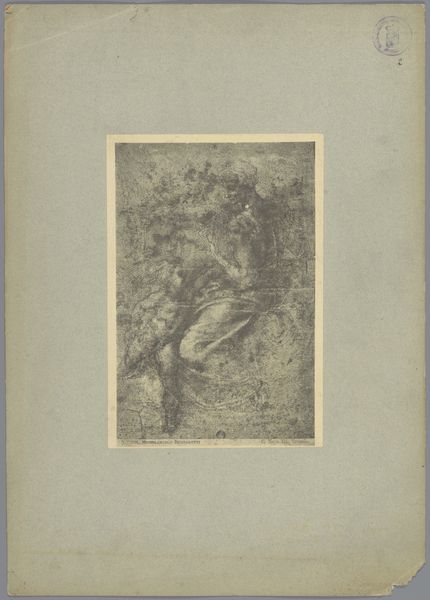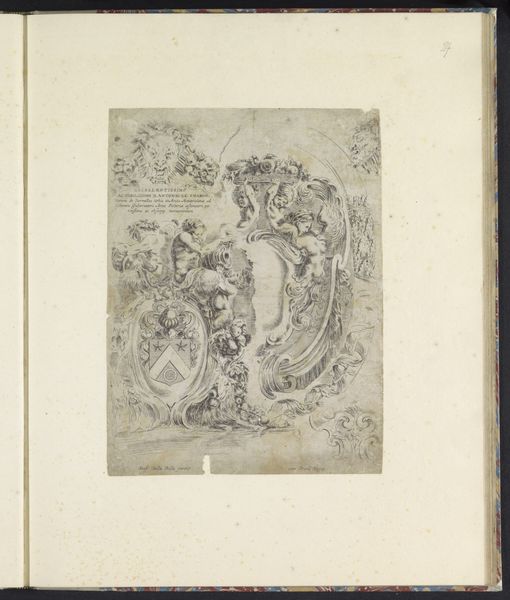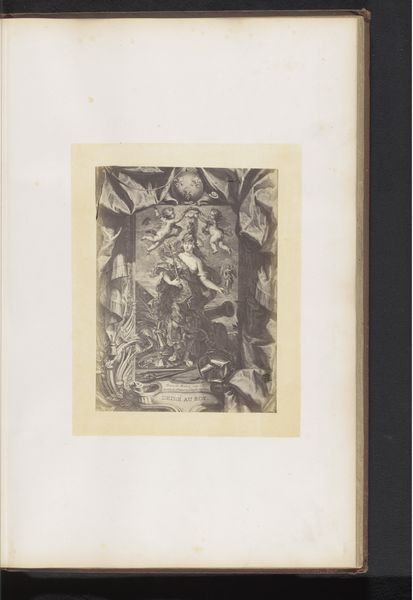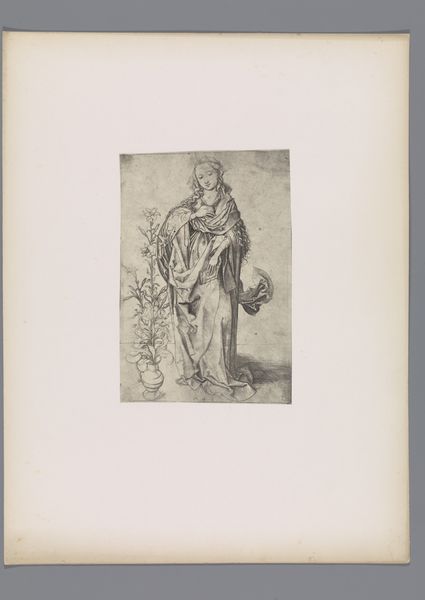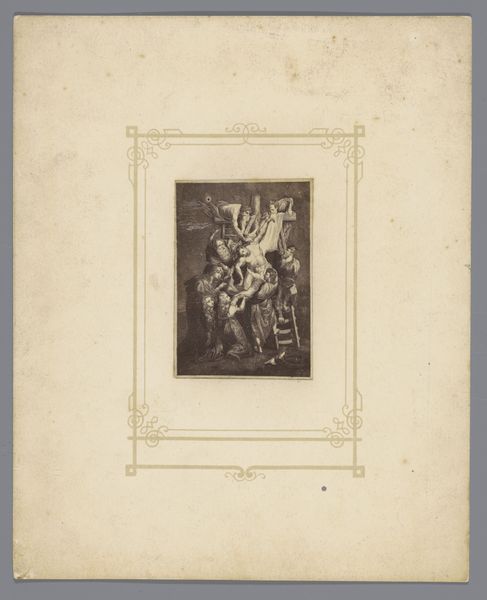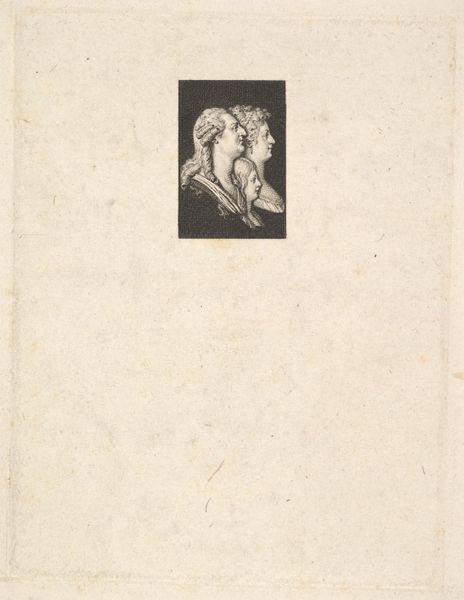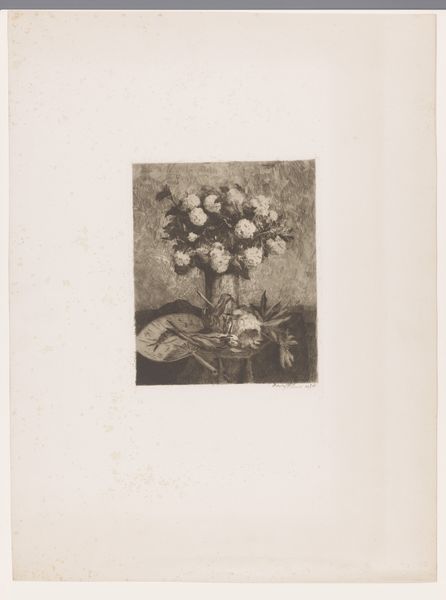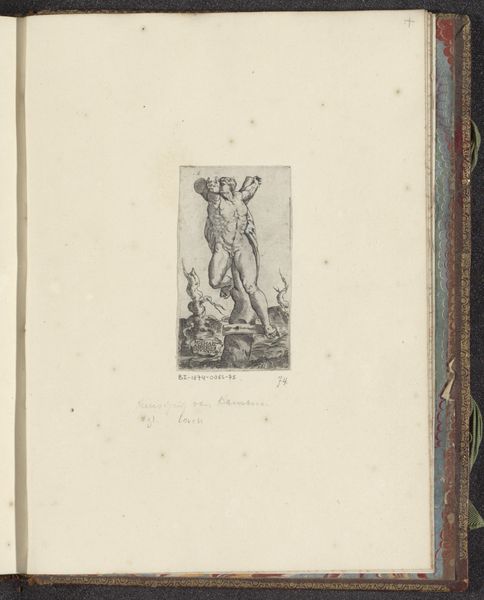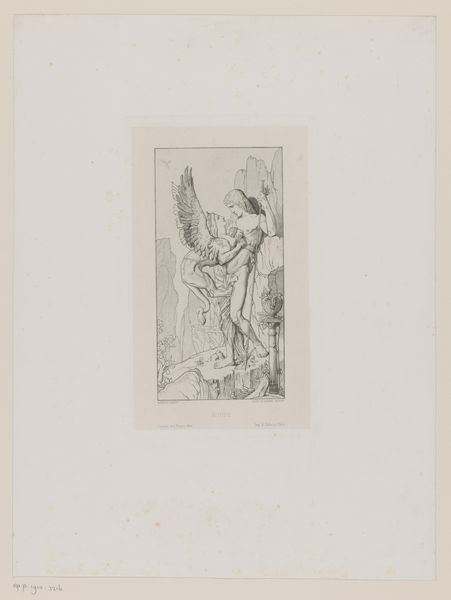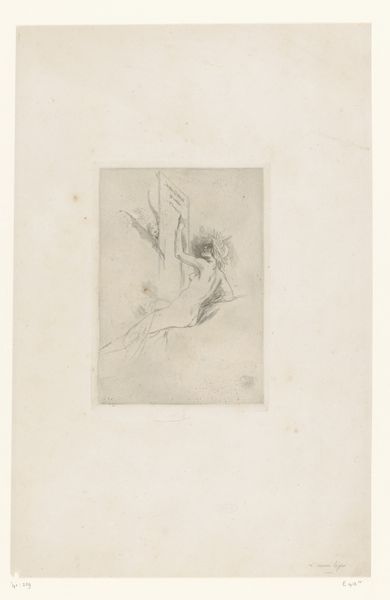
Reproductie van een prent van de heilige Sebastiaan door Martin Schongauer before 1872
0:00
0:00
print, paper, engraving
#
medieval
# print
#
figuration
#
paper
#
nude
#
engraving
Dimensions: height 157 mm, width 113 mm
Copyright: Rijks Museum: Open Domain
Curator: Here at the Rijksmuseum, we have a reproduction of an engraving dating to before 1872, crafted by Simonau & Toovey. It is a rendering of Martin Schongauer's Saint Sebastian. Editor: The stark contrasts immediately strike me. The almost fragile figure of Saint Sebastian juxtaposed against the rough, gnarled tree—it’s a visually arresting image. Curator: What's fascinating is Schongauer’s mastery of engraving; think about the labour and skill involved in creating these fine lines to render light, shadow, and texture on paper. Each line is deliberate, reflective of a time where craft was intrinsically linked to artistic expression, and the socio-economic value embedded in production. Editor: Precisely! Note the meticulous rendering of the saint's musculature and hair. There's a beautiful play of light across his body, almost a sensuous quality. It draws the eye in, guiding us through the scene and intensifying our focus on his idealized physique, particularly when framed against the darkness behind him. The tree, a cruciform stand-in, supports and entraps the suffering body, emphasizing the drama inherent to this representation. Curator: I'd argue the medium is equally crucial; this wasn’t some large-scale oil painting destined for a palace. It was a print, intended for wider distribution, perhaps to be consumed in private devotion, reflecting the democratization of imagery at that time. Consider the labor involved; the production of prints was essential to the expansion of images across Europe. Editor: Absolutely, yet, even within a more accessible medium, the composition echoes the formal ideals of the period: the carefully arranged folds of cloth, the anguished, yet serene expression—everything contributes to a specific emotional impact. It communicates ideas about suffering, redemption, the nature of human perfection, that are so crucial. Curator: In this context, think about how this image was part of a visual economy of devotion, a consumer item for a very specific purpose. What makes it particularly thought-provoking is understanding these nuances of labour and economic value interwoven in what we conventionally understand as fine art. Editor: That intersection does present a fuller appreciation of the art object, doesn’t it? Recognizing both the inherent structural harmonies and its place within a broader cultural and economic landscape undeniably deepens one’s perspective on Saint Sebastian.
Comments
No comments
Be the first to comment and join the conversation on the ultimate creative platform.

